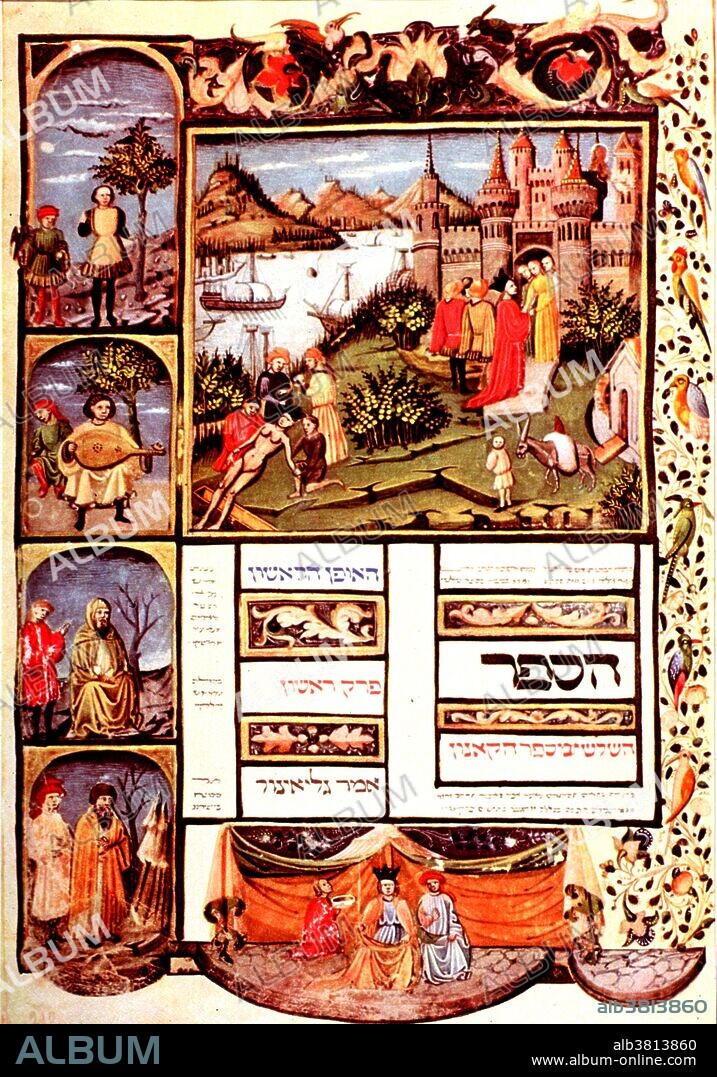alb3813860
Avicenna's Canon of Medicine, Medieval Edition

|
Añadir a otro lightbox |
|
Añadir a otro lightbox |



¿Ya tienes cuenta? Iniciar sesión
¿No tienes cuenta? Regístrate
Compra esta imagen

Título:
Avicenna's Canon of Medicine, Medieval Edition
Descripción:
Ver traducción automática
15th century copy of Avicenna's Canon of Medicine. The miniatures here may represent the various stages in the life of a queen, culminating with her death and burial in the central image. The Canon of Medicine is a 14 volume Persian medical encyclopedia written by Avicenna and completed in 1025. The work covers such basic subjects as anatomy and hygiene, describes a vast range of diseases and injuries, and lists hundreds of different medicines. Abu 'Ali al-Husayn ibn 'Abd Allah ibn Sina (980-1037), commonly known as Ibn Sina or by his Latinized name Avicenna, was a Persian polymath, who wrote almost 450 treatises on a wide range of subjects, of which around 240 have survived. He is regarded as the most famous and influential polymath of the Islamic Golden Age. A severe colic, which seized him on the march of the army against Hamadan, was checked by remedies so violent that Ibn Sina could scarcely stand. On his deathbed he bestowed his goods on the poor, restored unjust gains, freed his slaves, and read through the Qur'an every three days until his death in 1037 at the age of 58.
Crédito:
Album / NLM/Science Source
Autorizaciones:
Modelo: No - Propiedad: No
¿Preguntas relacionadas con los derechos?
¿Preguntas relacionadas con los derechos?
Tamaño imagen:
2850 x 4070 px | 33.2 MB
Tamaño impresión:
24.1 x 34.5 cm | 9.5 x 13.6 in (300 dpi)
Palabras clave:
ALQUIMIA • ARTE • ASTRONOMIA • ASTRONOMO • AUTOR • AVICENA • CIENCIA • CIENTIFICO • ENCICLOPEDIA • ENTIERRO • ESCRITOR • FALLECIMIENTO • FAMOSO • FILOSOFIA • FILOSOFO • FÍSICA (CIENCIA) • FÍSICO (CIENTIFICO) • GEOLOGIA • HISTORIA • HISTORICO • IMPORTANTE • ISLAM • ISLÁMICO • LIBRO • LOGICA • MANUSCRITO • MATEMATICAS • MATEMÁTICO • MEDICINA • MEDICINAL • MEDIEVAL • MINIATURA • MUJER • MUJERES • MUSULMAN • OBRA DE ARTE • PERSA • POESIA • POETA • PSICOLOGIA • REINA • S. -XV • S. X. • SIGLO XI • TEOLOGO • TEXTO
 Pinterest
Pinterest Twitter
Twitter Facebook
Facebook Copiar enlace
Copiar enlace Email
Email
